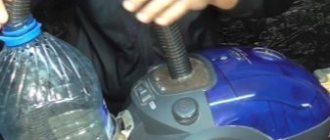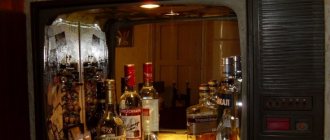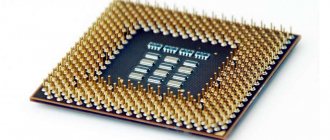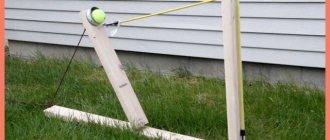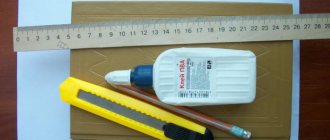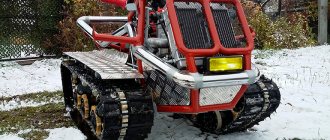General characteristics of finished products
Most types of furniture for soldering have a metal pipe frame as a base, onto which sheet metal sides are attached.
The table top is a thick sheet of plywood covered with textolite. This is very convenient for soldering. The surface edging is made of a cast aluminum strip, which manufacturers, in a foreign manner, call molding. The dimensions of the tabletop allow you to solder a variety of parts without any problems.
At the rear edge of the table there is a firmly fixed superstructure with shelves and small cabinets, the volume of which allows you to place many accessories.
Almost all models of assembly tables for soldering are equipped with a fluorescent lamp, which allows you to work enthusiastically at any time of the day.
The package usually includes a socket block. No need to look for additional points to connect. You can safely work with a soldering iron without harassing others.
Ready-made mounting tables for permanent soldering have a protective screen with channels for forced ventilation. Models with hoods are usually purchased for industrial facilities.
It is inconvenient to use them at home. The visor with ventilation, which is a continuation of the rear wall, creates the impression of a bulky structure. This model of furniture for soldering costs much more than conventional assembly tables.
Soldering tables with rotating capabilities attract special attention from soldering workers. They cost more, but if it is necessary to carry out work involving turning any element, this furniture is extremely useful.
DIY soldering table
Euro-made products - only the best home-made products of the RuNet! How to make it yourself, master classes, photos, drawings, instructions, books, videos.
- home
- Homemade catalog
- Design ideas
- Homemade video
- Books and magazines
- Feedback
- The best homemade products
- Homemade products for the garden
- Homemade devices
- Automobiles, for the garage
- Electronic homemade products
- Homemade products for home and everyday life
- alternative energy
- DIY furniture
- Construction and repair
- Homemade products for fishing
- Crafts and handicrafts
- Homemade material
- Homemade products for the computer
- Homemade super gadgets
- Other homemade products
- Partner materials
Characteristics of the heating table
For specialists involved in soldering printed circuit boards, special compact devices are available for sale. They are called thermal tables. This is a small piece of equipment with a constantly warm surface.
The heating table has a heating element, above which a heat-dissipating plate is fixed. The soldering system is equipped with ventilation and ensures uniform heating of the working surface. The device is grounded; static electricity is excluded.
The cord is encased in a heat-resistant silicone sheath. The control unit is located in a convenient position and is easy for the user to understand. The heat table provides heating of circuit boards and metal elements during soldering.
We do it ourselves
Many craftsmen assemble tables themselves from scrap materials. Everyone chooses available raw materials in specific conditions. Some craftsmen, working in the garage, use doors from old refrigerators as countertops.
Other lovers, located in apartments, choose more aesthetic options. Many solders like PCB as the basis of a working surface. It is a little expensive, but very convenient to use.
Sometimes they take thick glass and make a tabletop out of it. You need to work on it very carefully. Impact-resistant glass is expensive, and regular types are easy to break if you are careless. It’s scary to imagine the picture of a soldering table falling apart in working condition.
Stainless steel is very reliable. You can use a very small plate, the size of a landscape sheet, placing it on a wooden or plywood base. This is enough for home soldering.
It is recommended to weld a piece of pipe to a steel table, which will serve as a holder for a soldering iron. You can attach metal legs to the sheet or place it on a workbench.
Stainless steel heating table
If desired, it is easy to provide ventilation to the table and provide lighting. A little effort, minimal costs and a certain amount of time will allow the soldering worker to equip a decent workplace.
The main thing you need to remember is safety. All parts of the table must be secured so that no falling tools can damage it.
Source: svaring.com
Soldering table for LEDs or a mess of iron.
I have been installing LEDs for a long time, I usually put them on hot-melt adhesive paste or thermal paste and mechanical clamp, but there is another way. If you solder the bottom of the LED, and even to a copper substrate, then the heat dissipation through the solder is much better than through the paste. You can overclock XML to 6 amps and do other interesting things. After an unsuccessful attempt to solder an LED to a copper wire with a 10mm hot air gun, I realized that I needed a soldering table. If anyone is interested in how to assemble a soldering table from an iron and a PID temperature controller in an evening, you can read on.
LEDs are very sensitive to temperature and die when overheated. There are temperature charts, for example this one
It is not possible to do this with a soldering iron, an industrial hair dryer, or a hot air gun at a soldering station. A set of a thermostat, a temperature sensor for it and a solid-state relay was ordered. A lonely Soviet iron was found in the trash. The iron was disassembled to the ground, the standard thermostat-turner went into the trash. I lightly drilled the iron in the center of the platform, put a little thermal paste, and pressed the temperature sensor with an iron plate.
Two wires to the heater contacts and the iron can be assembled.
A 40*60 box was used as a base. I cut a hole in it for the temperature regulator, the regulator is attached to a hot glue gun. I did not attach the solid-state relay, it is held in place by rigid wires, I took 2.5 squares of copper.
The iron gets hot (oddly enough), so I had to secure the box through spacers, otherwise the box would float.
The solid-state relay holds up to 40A, that is, almost 9 kilos of power at 220 volts. Iron 1KW, heating of the relay was not noticed. When a voltage of 3-32V is applied to the relay input, it opens. The thermostat of this version already produces a 12 volt signal (there are others with dry contacts), that is, an additional power supply is not needed.
The thermal resistance must be connected taking into account the polarity; the color on the terminals seems to hint at this.
The operation of the rex-c-100 is simple and straightforward. When turned on, it shows two temperatures - real and set. If the real one is less than the set one, it outputs 12V and drives the temperature up. To change the temperature, press SET, use the arrows to move the temperature, and again SET returns to the main mode.
Auto-calibration for the current situation is possible. In this case, the controller evaluates the inertia of the heater and sets the parameters of the PID controller.
Enter the menu (long press the SET buttons).
Change the AGU parameter from 0 to 1.
Exit the menu by pressing the SET button. The AT symbol lights up on the display. The regulator raises the temperature to the set temperature (150 in the photo).
When the set temperature is reached, the load is turned off, but the temperature rises by inertia (about 170).
The iron cools down, when the temperature drops below the set point, the thermostat pushes it up a little with impulses, holds it exactly, the temperature does not fluctuate. When auto-calibration is completed, the AT symbol goes out.
After auto-calibration, the thermostat accurately maintains the temperature; I raised it to 300C. At first, the load is turned on constantly, when approaching the set temperature, the controller turns off the load for some time, jumps a little over the set temperature, lowers it and stabilizes. Manual correction of any of the parameters of the PID controller is possible, it seems that it can also work for cooling, there is an alarm output (the alarm temperature is set as the first parameter in the menu).
If necessary, you can make a video, but the process is slow, you will have to take a Timelapse.
Now the iron has received a second life. You can solder LEDs, you can fuse rosin into a solid state from powder and pieces, you can warm up tea or your hands, the minimum temperature is not limited. Ironing is not convenient, the thermostat gets in the way.
Pros of REX-100 - +everything included, all included. A power supply is not needed, 220V is enough. easy to use and understandable, no cons found.
Source: mysku.ru
KIA Ceed SW Snezhka › Logbook › Tile-table for mass soldering of SMD elements.
According to the requests of workers, here is the design of a table for soldering, in particular LEDs 5050. Heating the board with a halogen spotlight has a couple of disadvantages, the first is uneven heating, the heating is hotter along the lamp, less towards the edges, and second, it creates a blinding oiliness during operation))) That's why this tile was collected.
The heater was taken from an industrial electric stove, from one section, in a cast-iron body of which there are 2 heating elements of 3 kW 220V each, one was taken, of this design.
A titanium sheet of approximately 3-4 mm and a suitable size was taken as the top plate, 4 bolts were welded to the plate, so that they were located between the “waves” of the heating element, covered with a second plate on top and tightened with nuts, you get a kind of sandwich.
M6 bolts are screwed through bronze bushings (sawed-off driven anchors) to the mounting bolts in such a way that the heating element output does not touch the table; a piece of wire with a plug is used as a current supply. In the future I may add a thermostat, it heats up in one fell swoop.
Source: www.drive2.ru
